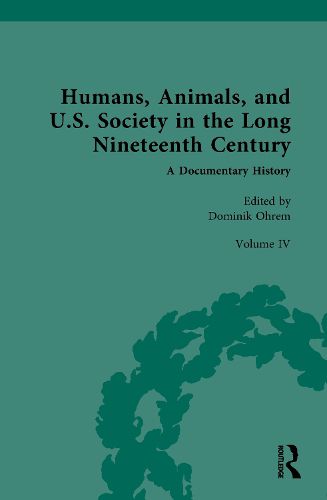Readings Newsletter
Become a Readings Member to make your shopping experience even easier.
Sign in or sign up for free!
You’re not far away from qualifying for FREE standard shipping within Australia
You’ve qualified for FREE standard shipping within Australia
The cart is loading…






Volume IV comprises two sections dealing, respectively, with the development of pet culture and its evolution as a cultural institution over the course of the long nineteenth century, and with the variegated presence of domesticated (and feralised) animals in U.S. cities. Closely tied to the antebellum rise of the American middle-class family and the sentimentalisation of (certain) human-animal relationships, by the turn of the twentieth century American petkeeping had become the target of an expansive industry that offered everything from gourmet pet foods and fashionable accessories to healthcare and boarding services. This proliferation of companion animals also had a significant impact on urban life. Besides walking, sitting, or lying on sidewalks and being sold in city stores and on street corners, in cases of abandonment the animals swelled an ever-increasing population of canine and feline strays. Together with horses, pigs, cows, chicken, and urban wildlife, these animals fundamentally shaped the routines, rhythms, and general experience of nineteenth-century urban life for human city dwellers.
$9.00 standard shipping within Australia
FREE standard shipping within Australia for orders over $100.00
Express & International shipping calculated at checkout
Volume IV comprises two sections dealing, respectively, with the development of pet culture and its evolution as a cultural institution over the course of the long nineteenth century, and with the variegated presence of domesticated (and feralised) animals in U.S. cities. Closely tied to the antebellum rise of the American middle-class family and the sentimentalisation of (certain) human-animal relationships, by the turn of the twentieth century American petkeeping had become the target of an expansive industry that offered everything from gourmet pet foods and fashionable accessories to healthcare and boarding services. This proliferation of companion animals also had a significant impact on urban life. Besides walking, sitting, or lying on sidewalks and being sold in city stores and on street corners, in cases of abandonment the animals swelled an ever-increasing population of canine and feline strays. Together with horses, pigs, cows, chicken, and urban wildlife, these animals fundamentally shaped the routines, rhythms, and general experience of nineteenth-century urban life for human city dwellers.